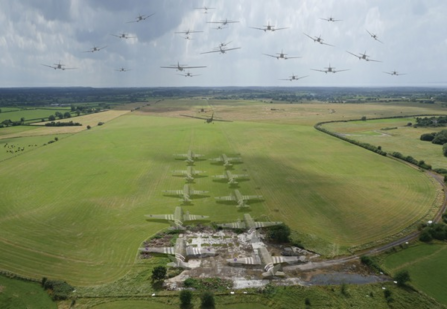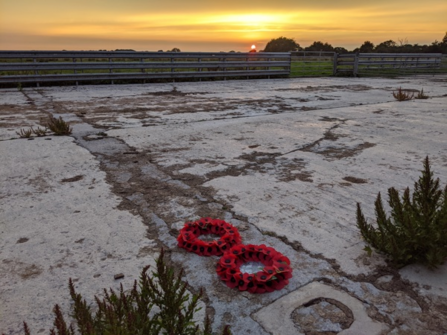Guest blog written by Vincent Povey - Volunteer Warden and Historian - RAF Blakehill Farm
Any visitor to the Blakehill Farm nature reserve will immediately be aware of its former wartime role as an airfield. The RAF ensign flies flutters proudly above the information point as you enter from the car park, where the story of the airfields short, but fascinating history is told, along with an aerial photo of how the site once looked so any casual visitor can familiarise themselves with what happened here almost a lifetime ago.
It wasn’t always like this. It has taken many years of study and commitment to bring the history of RAF Blakehill to life, with an idea I came up with called ‘War to Wildlife’, with the support of the Wiltshire Wildlife Trust, so I could share my research of the sites history with the public and tell the tales of the men and women who flew from this airfield, adding value to the visitor experience and preserving history forever.
As the project continues, I am sourcing new information all the time, with the help of research partners, lectures, social media, and through the sites dedicated website which I manage with the artistic digital support of my wife Georgina.
Guided history walks are always popular at Blakehill, though with events in Ukraine dominating the news, war in Europe is once again making headlines. Out of respect for this, it has been decided to postpone events here until a more appropriate time.
Imagine then, 78 years ago, on the 5th June 1944 that you made your way down to stand by the Whitworth building, near to where the farm yard at the south western corner of the former airfield is today.
Imagine it is ten minutes to eleven on that evening. At the eastern end of the main 2000 yard runway, out of site to where you are standing, you hear the roar of six, 233 Squadron RAF Dakota’s as they start to line up. Attached by tow line to these aircraft were Horsa Gliders of ‘F’ Squadron Glider Pilot Regiment. These huge gliders, made of nothing but plywood, carried jeeps, trailers, motorcycles, bicycles, explosives and fighting men and were released from their C47 Dakota tow planes away from the front line to glide silently into enemy territory, landing on their designated landing zones, taking the enemy by surprise.
It was the same for another fifteen RAF Squadrons that evening, as from other UK airfields, a total of 362 transport aircraft commenced operation ‘Tonga’, the airborne phase of operation ‘Overlord’.



